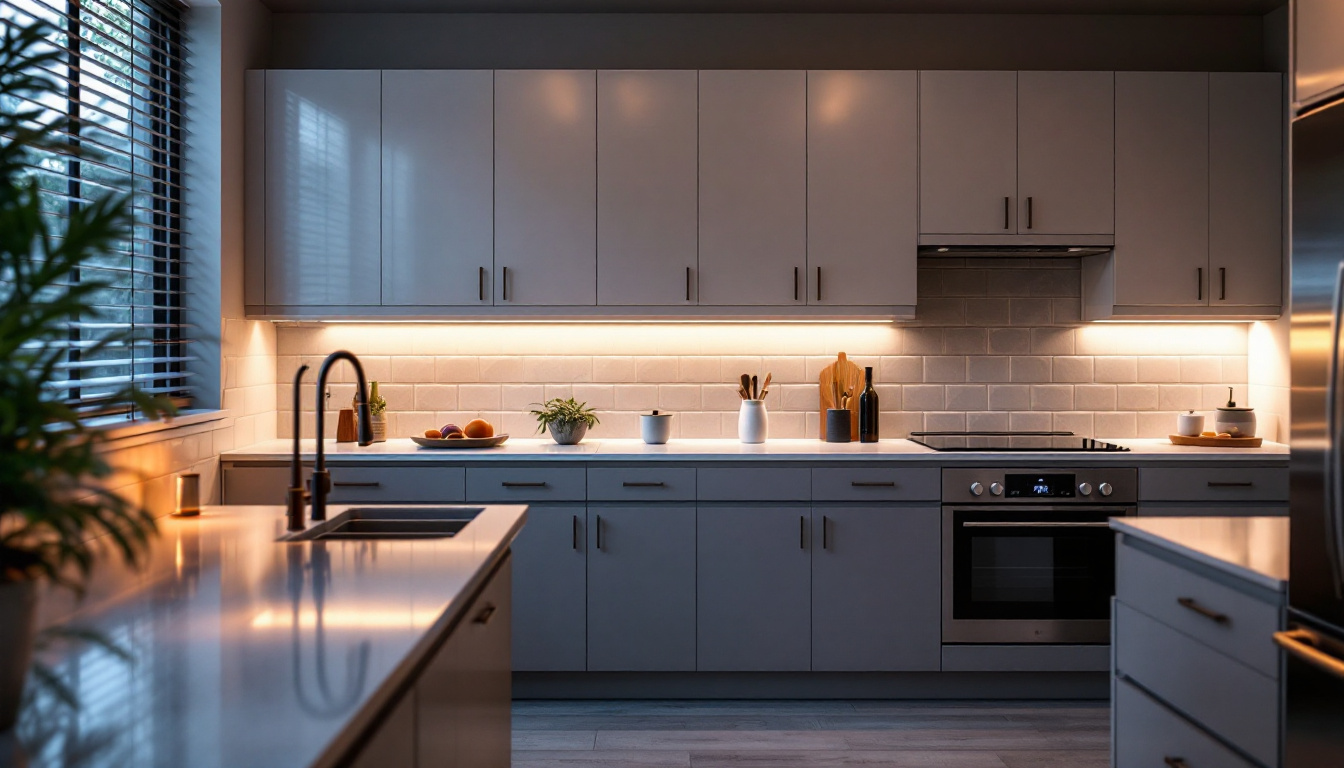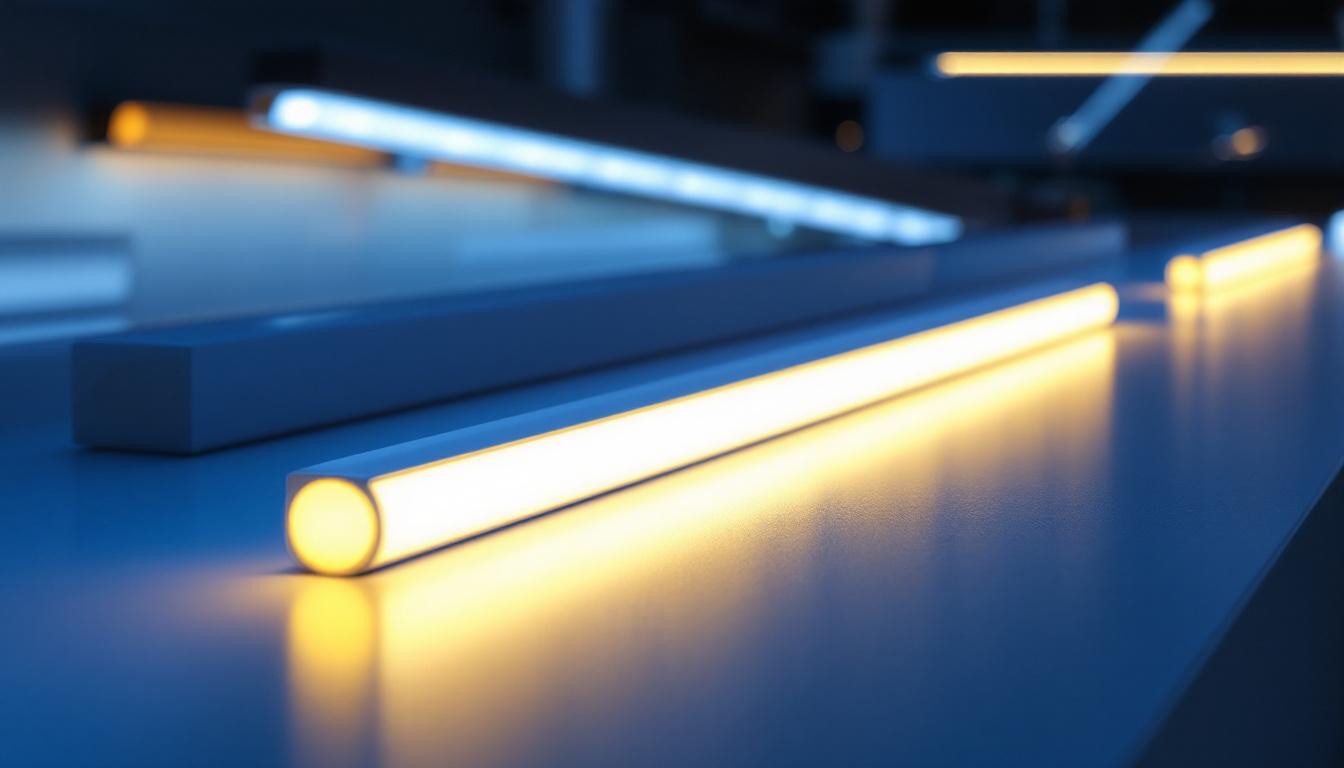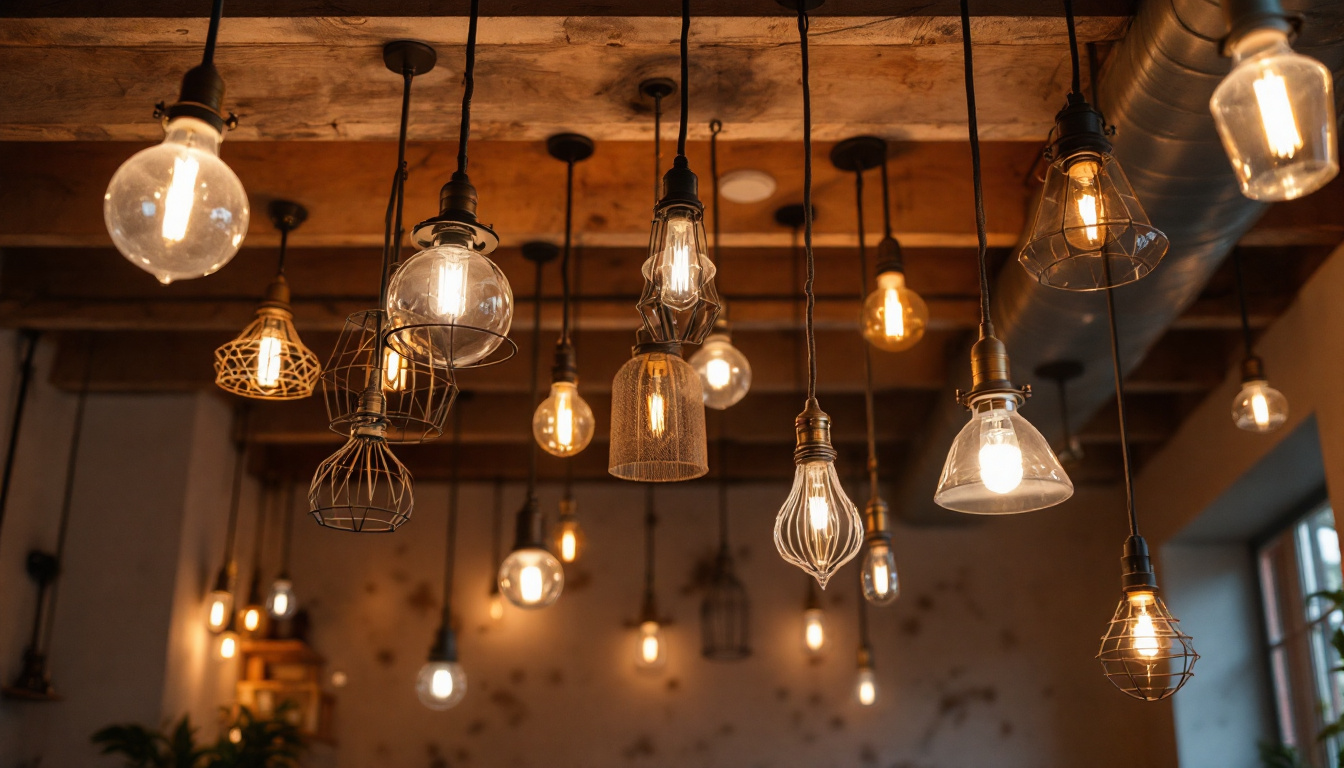
under-counter lighting is an essential aspect of modern kitchen design, providing both functionality and ambiance. For lighting contractors, understanding the nuances of under-counter lights is crucial for delivering high-quality installations that meet client expectations. This article serves as a comprehensive checklist for lighting contractors, ensuring that every detail is covered from selection to installation.
Under-counter lights are fixtures installed beneath cabinets or shelves, illuminating workspaces such as countertops and kitchen islands. They enhance visibility for tasks like food preparation, cooking, and cleaning, while also adding a layer of aesthetic appeal to the overall kitchen design.
These lights come in various forms, including LED strips, puck lights, and fluorescent fixtures. Each type has its unique advantages and applications, making it essential for contractors to be well-versed in the options available.
When selecting under-counter lights, contractors should consider the different types available. LED lights are popular due to their energy efficiency and long lifespan. They emit minimal heat, making them safe for use in tight spaces. Puck lights, on the other hand, provide focused illumination and are often used for highlighting specific areas.
Fluorescent fixtures are another option, offering bright, even light. However, they may not be as energy-efficient as LEDs and can produce a harsher light quality. Understanding the pros and cons of each type will help contractors make informed recommendations to their clients. Additionally, some modern under-counter lighting options now include smart technology, allowing users to control brightness and color temperature via smartphone apps or voice commands, adding an extra layer of convenience and customization to the kitchen environment.
Under-counter lighting offers numerous benefits that enhance both functionality and aesthetics. First and foremost, it improves visibility in work areas, reducing the risk of accidents and making tasks easier to perform. Additionally, it can create a warm, inviting atmosphere, contributing to the overall design of the kitchen.
Moreover, under-counter lights can be used to highlight architectural features or decorative elements, adding depth and dimension to the space. This versatility makes them a valuable addition to any kitchen renovation or new build. Furthermore, under-counter lighting can also play a significant role in energy conservation; by using task lighting instead of overhead lights, homeowners can reduce their overall energy consumption while still achieving a well-lit workspace. The strategic placement of these lights can also help in defining zones within an open-concept layout, guiding movement and enhancing the flow of the kitchen area.
Proper planning is key to a successful under-counter lighting installation. Contractors should begin by assessing the client’s needs and preferences, considering factors such as the kitchen layout, existing lighting, and desired ambiance.
It’s also important to take measurements to determine the appropriate placement of fixtures. This ensures that the lights will provide adequate coverage without creating harsh shadows or overly bright spots.
Engaging with clients to understand their specific requirements is essential. Some may prioritize functionality, while others might focus on aesthetics. Discussing the intended use of the space can help determine the most suitable lighting solutions.
For instance, a client who frequently cooks may benefit from brighter, more focused lighting, while someone who entertains guests may prefer softer, ambient lighting. Tailoring the installation to meet these needs will result in a more satisfied client.
Additionally, it’s crucial to consider the color temperature of the lighting. Warmer tones can create a cozy and inviting atmosphere, ideal for social gatherings, while cooler tones can enhance visibility and clarity, making them perfect for food preparation. By understanding the emotional impact of different lighting temperatures, contractors can better align their recommendations with the client’s vision for their space.
Once client needs are established, the next step is to determine fixture placement. This involves considering the height of the cabinets, the depth of the countertops, and the overall layout of the kitchen.
Typically, under-counter lights should be installed approximately 2 to 4 inches from the back of the countertop to ensure even light distribution. Additionally, spacing fixtures evenly will help avoid dark spots and create a cohesive look.
Moreover, it’s beneficial to take into account the type of fixtures being used. LED strip lights, for example, can be easily cut to fit specific lengths and can be placed in a variety of configurations, while puck lights offer a more concentrated beam that can highlight specific areas. Understanding the characteristics of each lighting option allows for a more strategic approach to placement, ensuring that every inch of the workspace is well-lit and functional. Furthermore, considering dimmable options can provide flexibility, allowing the client to adjust the brightness according to their needs at different times of the day.
With a variety of under-counter lighting options available, selecting the right fixtures is crucial. Contractors should consider factors such as energy efficiency, light output, and design aesthetics when making recommendations.
LED fixtures are often the preferred choice due to their energy efficiency and longevity. However, the color temperature of the lights should also be taken into account, as it can significantly impact the overall feel of the kitchen.
Energy efficiency is a key consideration for many clients, particularly those looking to reduce their utility bills and environmental impact. LED lights are the most energy-efficient option, consuming significantly less power than traditional incandescent or fluorescent bulbs.
Contractors should also discuss the potential for dimmable fixtures, which allow clients to adjust the brightness according to their needs. This flexibility can enhance the functionality of the space while also contributing to energy savings.
The light output and color temperature of under-counter lights can greatly affect the kitchen’s atmosphere. A warm white light (around 2700K to 3000K) creates a cozy, inviting environment, while a cooler white light (4000K to 5000K) offers a more modern, clinical feel.
Contractors should guide clients in choosing the appropriate color temperature based on their preferences and the overall design of the kitchen. Additionally, ensuring that the light output is sufficient for the tasks being performed is essential for functionality.
The installation process for under-counter lights requires careful attention to detail to ensure a seamless and professional finish. Contractors should follow a systematic approach, from preparing the workspace to testing the lights once installed.
Before beginning the installation, it’s important to gather all necessary tools and materials. This includes the fixtures, mounting hardware, wiring, and any additional components required for the installation.
Preparing the workspace involves clearing the area of any obstacles and ensuring that the surface is clean and dry. This not only facilitates a smoother installation process but also helps prevent any damage to the cabinets or countertops.
Contractors should also ensure that they have access to the necessary electrical sources. This may involve working with existing wiring or installing new circuits, depending on the scope of the project.
Wiring the fixtures correctly is crucial for safety and functionality. Contractors should follow local electrical codes and guidelines to ensure compliance. This may involve connecting fixtures to a switch or dimmer, depending on the client’s preferences.
Once the wiring is complete, mounting the fixtures securely is the next step. This may involve using adhesive, screws, or clips, depending on the type of fixture being installed. Ensuring that the fixtures are level and evenly spaced will contribute to a polished final look.
After installation, testing the lights is essential to ensure they function correctly and meet the client’s expectations. This involves checking for any flickering, dimming, or dead spots that may need addressing.
Contractors should also take this opportunity to make any final adjustments to the positioning of the fixtures. Ensuring that the light is evenly distributed across the countertop will enhance both functionality and aesthetics.
Once the installation and testing are complete, conducting a walkthrough with the client is vital. This allows the contractor to demonstrate how the lighting works and to answer any questions the client may have.
During the walkthrough, it’s also helpful to discuss maintenance tips and the expected lifespan of the fixtures. Educating clients on how to care for their under-counter lights can help prolong their lifespan and maintain optimal performance.
Proper maintenance is crucial for ensuring the longevity and effectiveness of under-counter lights. Contractors should provide clients with guidance on how to care for their fixtures, including cleaning and troubleshooting tips.
Regular cleaning of the fixtures can prevent dust and grease buildup, which can diminish light output. Additionally, being aware of common issues, such as flickering lights or burned-out bulbs, can help clients address problems quickly.
To maintain the appearance and functionality of under-counter lights, clients should be advised to clean the fixtures regularly. Using a soft, damp cloth to wipe down the surfaces can help remove dust and grime without damaging the finish.
It’s also important to avoid using harsh chemicals or abrasive materials that could scratch the surface of the fixtures. Regular maintenance will ensure that the lights continue to perform well and look great over time.
Contractors should be prepared to address common issues that may arise with under-counter lights. Flickering lights can often be resolved by checking the connections and ensuring that the wiring is secure.
If a bulb burns out, replacing it with a compatible fixture is essential. Educating clients on how to troubleshoot these issues can empower them to address minor problems without needing professional assistance.
Under-counter lighting is a vital component of any modern kitchen, offering both functionality and aesthetic appeal. For lighting contractors, having a comprehensive checklist ensures that every detail is considered, from planning and installation to maintenance and troubleshooting.
By understanding the different types of fixtures, assessing client needs, and following a systematic installation process, contractors can deliver high-quality results that exceed client expectations. With the right knowledge and preparation, under-counter lighting can transform any kitchen into a well-lit, inviting space.
Ready to elevate your lighting installations with the finest selection of under-counter lights? Look no further than LumenWholesale, where we provide contractors with exceptional, spec-grade lighting products at unbeatable wholesale prices. Say goodbye to local distributor markups and hello to our extensive, industry-standard collection that guarantees reliable and high-performance lighting for every project. Plus, with free shipping on bulk orders, you can stock up on premium lighting without worrying about hidden fees or compromises. Don’t miss out on the perfect combination of quality, affordability, and convenience. Visit Wholesale Lighting at the Best Value today and transform your kitchen lighting projects with LumenWholesale.

Discover how LED lighting channels can revolutionize your lighting installation projects by enhancing aesthetics, improving light distribution, and ensuring durability.

Discover how hanging lights from the ceiling can transform your space and elevate your lighting design.

Discover the essentials of warehouse lighting in this comprehensive guide tailored for lighting contractors.

Discover the essential best practices for gym lighting with insights from top lighting contractors.